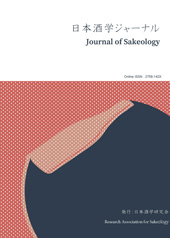Current issue
Displaying 1-4 of 4 articles from this issue
- |<
- <
- 1
- >
- >|
Contents
-
2023 Volume 2023 Pages 0-
Published: 2023
Released on J-STAGE: November 07, 2023
Download PDF (199K)
-
2023 Volume 2023 Pages 1-31
Published: November 07, 2023
Released on J-STAGE: November 07, 2023
Download PDF (2986K) -
2023 Volume 2023 Pages 32-37
Published: November 07, 2023
Released on J-STAGE: November 07, 2023
Download PDF (621K) -
2023 Volume 2023 Pages 38-47
Published: November 07, 2023
Released on J-STAGE: November 07, 2023
Download PDF (546K)
- |<
- <
- 1
- >
- >|
